|
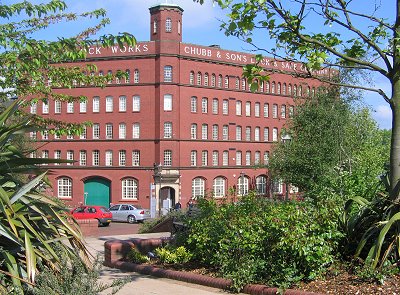
Listings: 1898-9, extended early C20. By C. H. M. Mileham of London.
An important example of a building relating to one of Wolverhampton's major
industries, with important townscape value for the approaches to the town
centre.
Awards: The "conversion and extension of a Grade II listed
Victorian warehouse to provide a centre for the media and creative arts"
received Civic Trust commendation in 1994. The designer for the
work was Robert Seager Design.
Comment:
| The Chubb Building is now often known as
the Lighthouse Media Centre or, simply, the Lighthouse.
This is one of the outstanding successes of
preservation and restoration; it received many awards.
It now contains a cinema, restaurant and pub and
several media companies as well as other businesses.
|
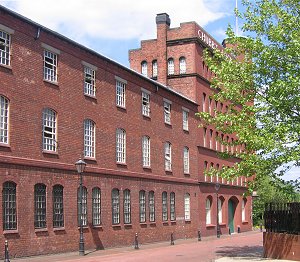 |
|
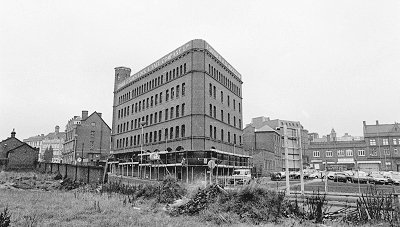
A photograph from the 1970s, just
as refurbishment was starting. |
The building was built in 1898-9 as the headquarters of Chubbs Locks
and Safes. (pace the Civic Trust, it was not a warehouse but a
manufactory). When they moved out it was taken over by Baelz.
It became empty during the 1960s and remained that way
for several years. It was refurbished by a co-operation
between the Borough Council and Midlands Industrial
Association. |
| The building was worth preserving on its own merits
and also because of its importance in the city's history
of lock and safe making.
By 1898 some factories were being built which were
single storey with roof lighting; or more than a single
room wide and relying on artificial lighting.
But Chubbs went for a high
class example of the traditional design. |
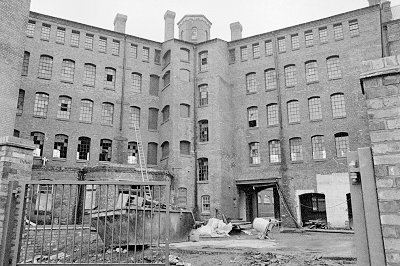
The interior of the courtyard in
the 1970s. |
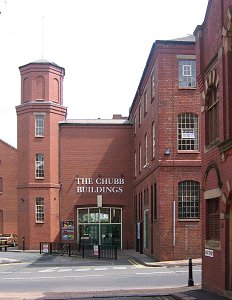 |
This corner, which houses a cinema amongst other
things, is mostly new build. The tower echoes the original
tower on the opposite corner of the building and visible in the top
picture. But this entrance to "the Lighthouse" also echoes
traditional representations of another building. You often
hear about "wit" in architecture. This is a real example of
it. |

|